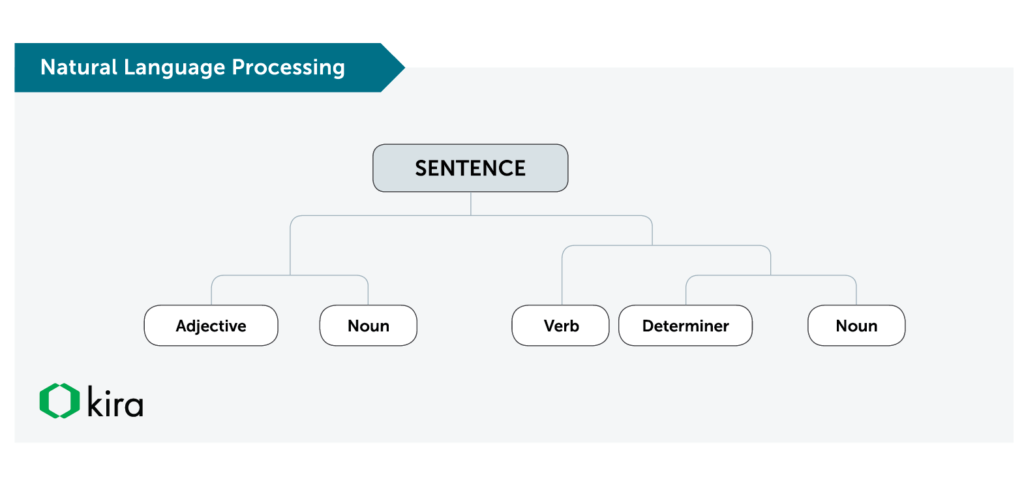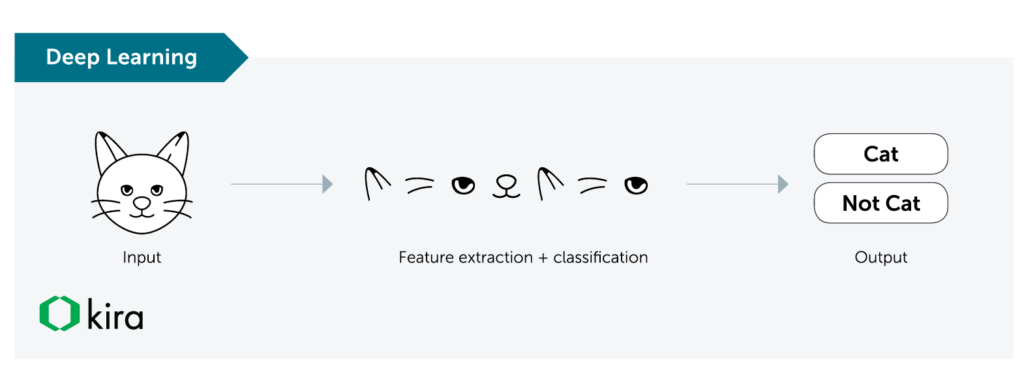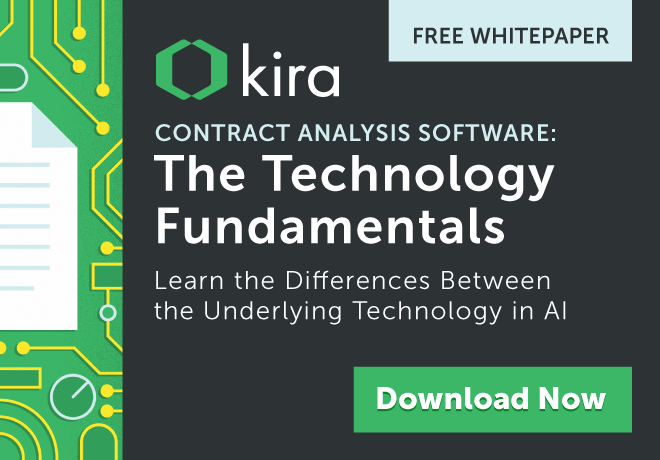
Over the past few years, contract analysis software has become a mainstream solution that clients increasingly expect and request. Yet, despite this growth in adoption, professional services teams and their clients often misunderstand the underlying technology.
The Problem with Software-Free Contract Analysis
Currently, most contract review is done manually (read: by humans, not technology) by lawyers and other experienced professionals. Junior staff typically take the first crack at reviewing contracts; they read agreements looking for set information and put their findings into summary charts. These summary charts take different forms, including organized lists of verbatim clauses, summarized provisions, and answers to questions.
Then, more senior staff (e.g., mid-level associates at large law firms) will spot-check first-level review results. In the case of due diligence contract review, results are sometimes further refined into high-level summaries, descriptive reports, and disclosure schedules.
As you can imagine, stories of the missed provisions and clauses falling through the cracks (often, at the most inconvenient times) are quite common. In fact, one of the principal problems with the current non-tech enhanced way contracts get reviewed (at law firms and elsewhere) is that people make mistakes in this work.
Accurate automated contract review systems can help. Automated contract provision extraction systems make their most powerful impact when they are accurate. The trouble is that building accurate provision models is a lot harder than it seems. Not to mention, the details of which technology is used to build provision models and who is involved in building those models really matter.
In short, the traditional mode of software-free contract review is (1) slow and costly, (2) prone to human error, and (3) generates initial results that are not as useful as they could be.
Contract Analysis Software: Then and Now
Contract review software exists to help users to both review contracts faster and more accurately and/or better organize the process and results.
Early contract review systems typically featured:
- questionnaires that prompted users to input values on specific contractual issues (e.g., the title is x; the agreement is: assignable/assignable with notice or consent/not-assignable);
- collected responses into queryable databases (e.g., show all agreements that are not assignable), and;
- tracked reviewer progress.
Several of these efforts were homegrown at top law firms to help with legal due diligence.
Nowadays, nearly all contract review systems include features that automatically locate user-specified information in contracts and put findings into summary charts. They may also include interface features to help users refine or organize results. Kira Systems, for example, automatically reads contracts for user-specified provisions (e.g., change of control, assignment, term), puts its findings into summary charts, and includes workflow tools to help users refine results.
The Technology Behind Contract Analysis Software
Essentially, companies offering automated contract abstraction systems base their extraction systems on one of two very different technologies:
Rules-Based Systems (aka, keyword search)
A) This allows for the creation of manual “rules” (such as Boolean search strings) that describe the provisions. The software then finds any language that fits within the parameters of those rules.
Machine Learning Systems
A) When unsupervised, these study data and automatically group clauses or provisions into buckets that are similar (which may represent standardized language) and those that are outliers. Whereas;
B) Supervised machine learning systems require an experienced lawyer to feed provisions from real contracts into a system designed to learn from those examples. The system studies this data in order to learn what language is relevant then builds probabilistic provision models. The models are then tested against a set of annotated agreements that the system is unfamiliar with in order to determine its readiness.
While rules-based systems are easier to set up, they have significant flaws (and are disfavored in most other areas because of their performance limitations). Alternatively, machine learning-based systems are very hard to build well but can be powerful once up and running.
Numerous Technologies for One Solution
It is helpful to remember that most contract analysis software solutions incorporate several different technologies to get the user to the desired result. As previously mentioned, the most common of these is natural language processing, but the adoption of deep learning has been increasing in recent years.
While natural language processing looks at how applications can work with human language (as opposed to images, for example), deep learning accompanies traditional prediction tasks with the system learning to correctly represent data. For example, classical machine learning might attempt to learn whether an image is of a cat, while deep learning will also attempt to determine what parts of the image make up a cat, such as their tail, whiskers, or eyes

What’s Going To Work For Me?
Finding the right contract analysis solution always starts with identifying the problem you’re trying to solve. Teams can then move ahead to identify what characteristics of different technology solutions they will find valuable and will provide them with the results they’re looking for.
In our latest whitepaper, Contract Analysis Software – The Technology Fundamentals we look at the pros and cons of each system to help professionals identify what is best to meet their organization’s specific needs.
[ Artificial Lawyer is proud to bring you this sponsored thought leadership article by Kira Systems. ]


1 Trackback / Pingback
Comments are closed.